
Features
Business
Grower Profiles
Growing in the Green: ‘Rain, rain, go away…’
November 16, 2009 By Melhem Sawaya
This, the ninth year for Sawaya Garden Trials, was especially
interesting. It was challenging in the sense that it rained almost all
of the time and the plants looked like they were dead.
 |
|
| 1 | |
 |
|
| 2 | |
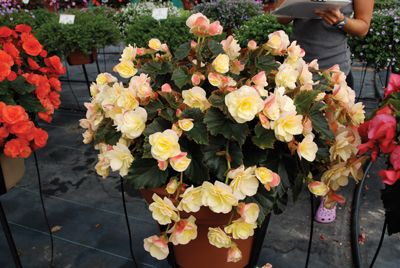 |
|
| 3 | |
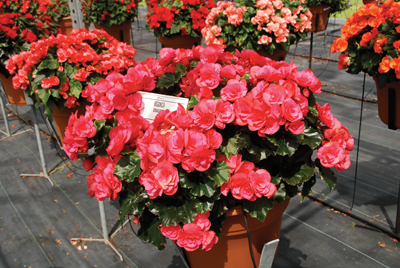 |
|
| 4 | |
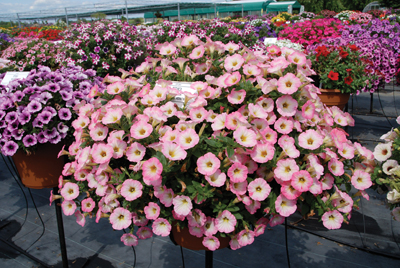 |
|
| 5 | |
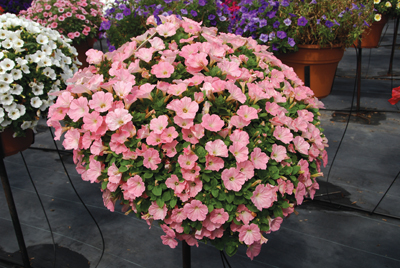 |
|
| 6 | |
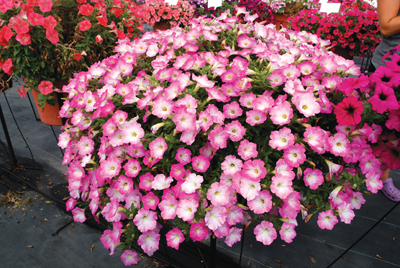 |
|
| 7 | |
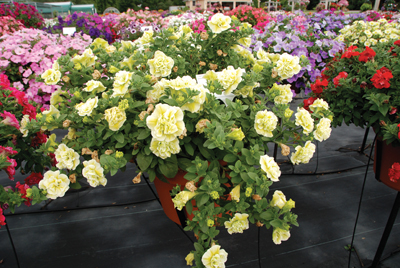 |
|
| 8 | |
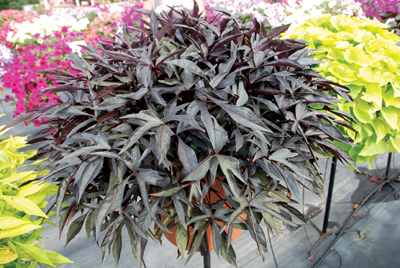 |
|
| 9 | |
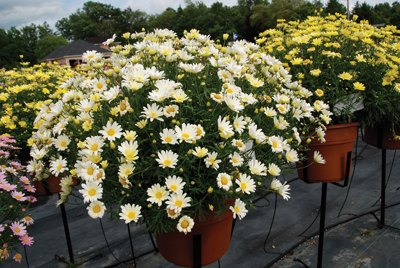 |
|
| 10 | |
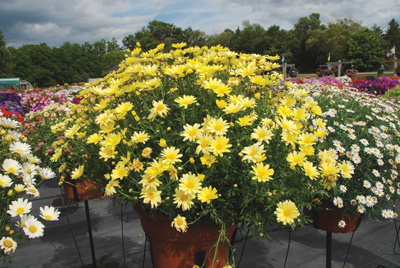 |
|
| 11 | |
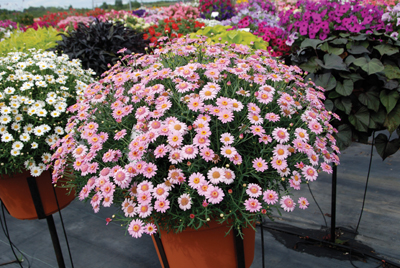 |
|
| 12 | |
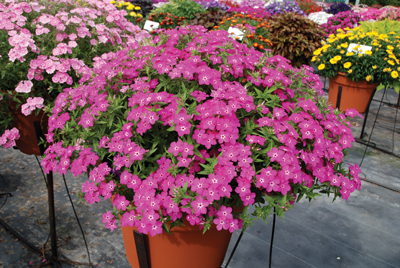 |
|
| 13 | |
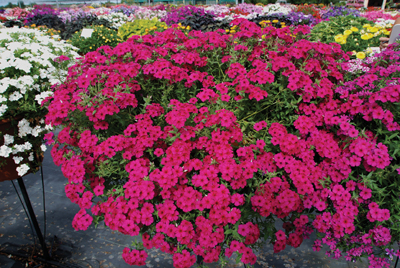 |
|
| 14 | |
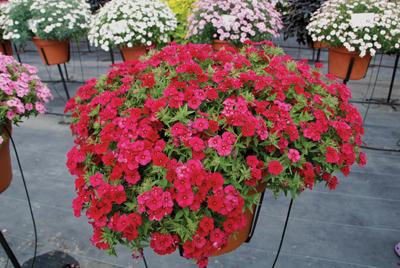 |
|
| 15 | |
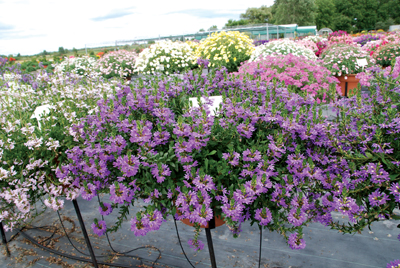 |
|
| 16 | |
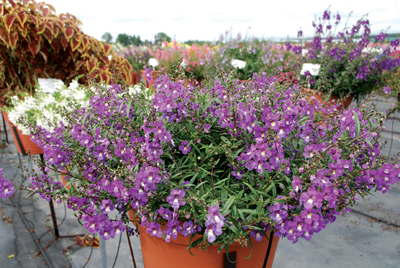 |
|
| 17 | |
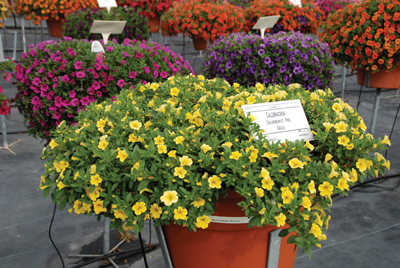 |
|
| 18 | |
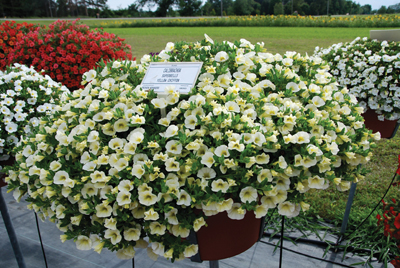 |
|
| 19 | |
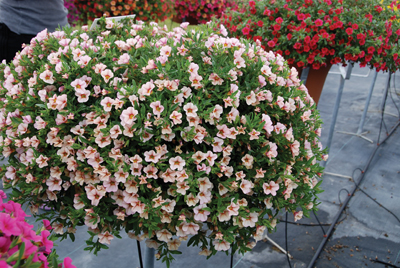 |
|
| 20 | |
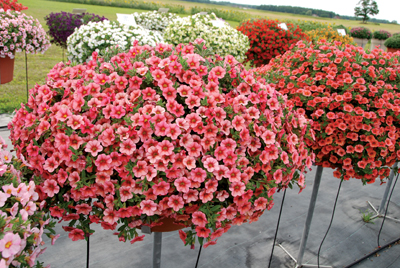 |
|
| 21 | |
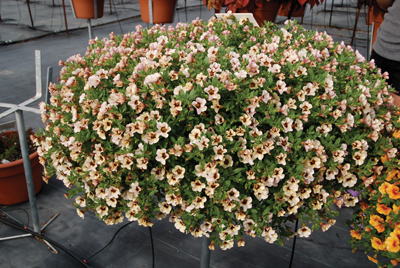 |
|
| 22 | |
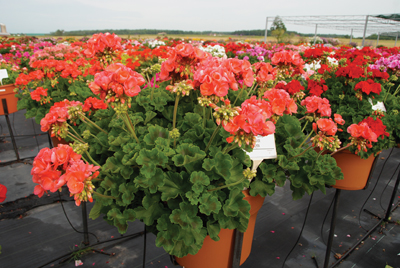 |
|
| 23 | |
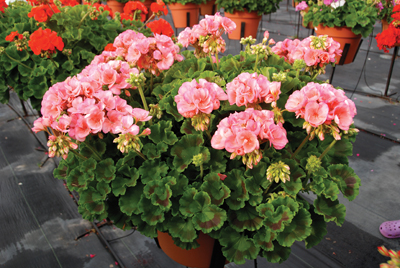 |
|
| 24 | |
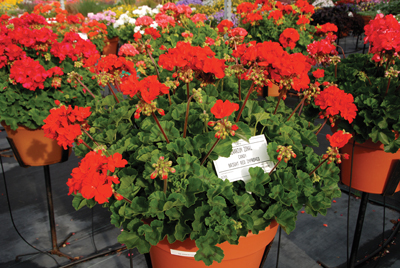 |
|
| 25 | |
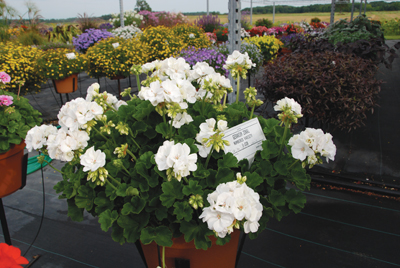 |
|
| 26 | |
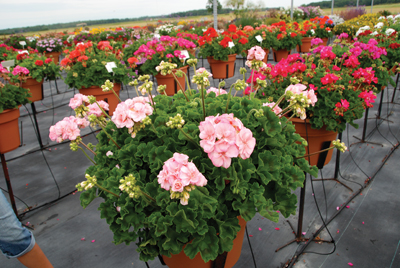 |
|
| 27 | |
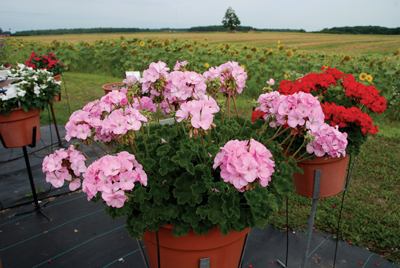 |
|
| 28 | |
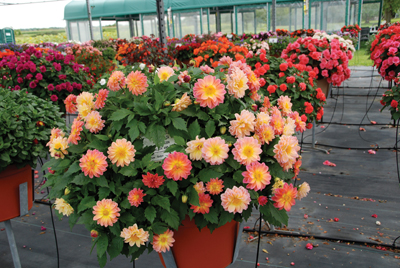 |
|
| 29 | |
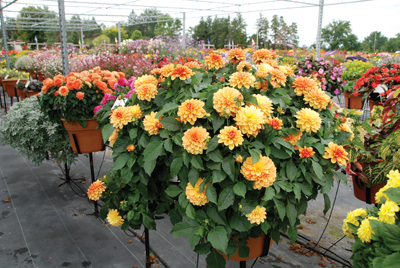 |
|
| 30 | |
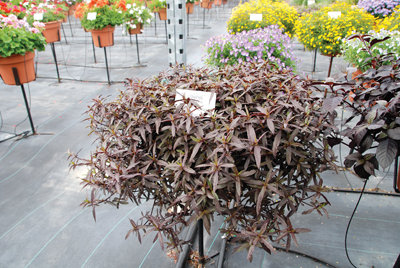 |
|
| 31 | |
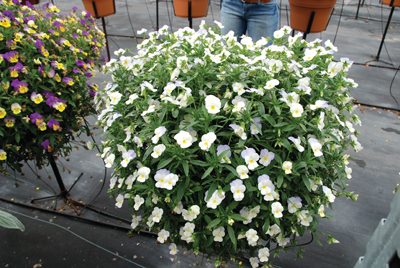 |
|
| 32 | |
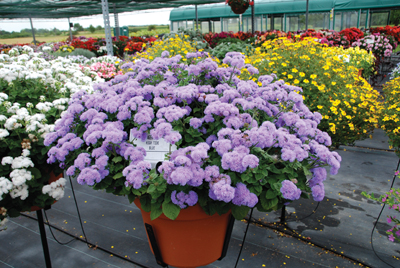 |
|
| 33 | |
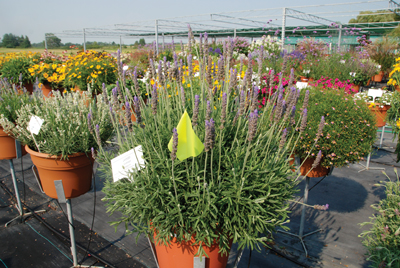 |
|
| 34 | |
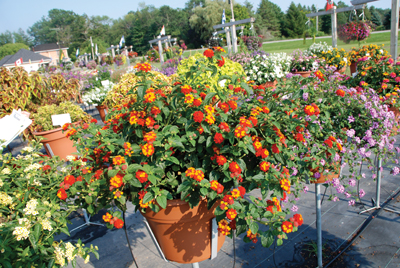 |
|
| 35 | |
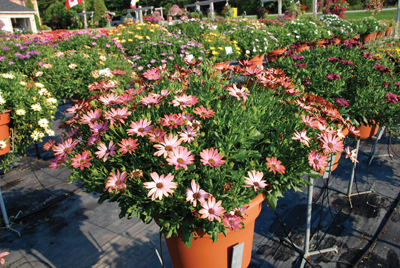 |
|
| 36 | |
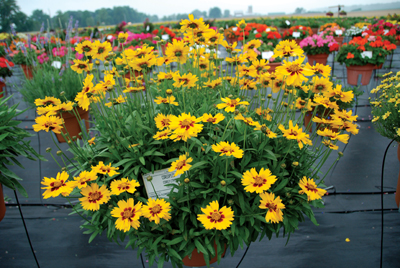 |
|
| 37 | |
 |
|
| 38
|
This, the ninth year for Sawaya Garden Trials, was especially interesting. It was challenging in the sense that it rained almost all of the time and the plants looked like they were dead. However, needing just one sunny day after three days or more of rain, the plants immediately perked up and looked better than they had just days earlier.
Some of the plants looked better immediately or showed no negative effect, including most of the grasses and foliage plants, along with scaevola, angelonia, gaura, coreopsis, lavender, agastache, New Guinea impatiens, begonias, bougainvillea, lantana and argyranthemum, to name a few.
On the other hand, verbena and the geraniums were the worst cultivars after a heavy rain. Calibrachoa looked quite sad after a rain, but once exposed to as little as four or five hours of sun, they perked up with minimal – or very little – damage to the blooms.
Some petunias were a total disaster; heavy rain caused the plants to droop. However, the main damage was to the blooms where botrytis took hold and the whole plant quickly deteriorated.
Some petunia cultivars were hardly affected by the rain. An excellent performer at our trials was the Vista Series.
Upright, early-flowering petunias – mainly the varieties from seed rather than vegetative – were worse. “All the seed varieties were cross-bred between the vigorous petunia and some early regular seed varieties and it seems that the more that seed genetics were involved, rather than the wild variety, the more the variety is susceptible to rain.”
WHO IS EDUCATING CONSUMERS ON WEATHER CONSIDERATIONS?
This was the year we could tell which varieties were truly rain-tolerant. With lots of rain, certain culture practices had to be adjusted – namely the rate of fertilizer, which we could do easily. However, what about the consumer? Who is telling them how to adjust to the weather conditions either in this, a wet year, or in other years when conditions may be too dry, or too cool, or too hot? After all, we are growing plants for the ultimate consumers, and their success is our success.
You have to be here when the trial plants are sold by Norfolk General Hospital volunteers and all the revenue goes for equipment purchases at the hospital. The people are amazed by the quality of the plants and are extremely happy to purchase the annual flowering pots in mid-August for $20 per pot.
So why is the dedicated gardener not getting the full potential beauty out of their plants?
The answer is simple; we are not communicating the information effectively to them. Unless we are planning to sit back and watch our sales shrink by 2.5 per cent every year, we better get together with our buyers (stores and garden centres) and educate the consumer. This is in addition to doing our homework in selecting the best garden performing varieties.
Here are some of the steps to increase industry sales:
Only grow varieties that are proven garden performers.
Sell plants in larger containers than you are used to, i.e., flat material in much larger cells or 4” pots, and 4” material in 6” pots. The rule-of-thumb is that if you have to apply growth regulators more than once to make the plant fit into the container, the container is too small for the plant. Examples include dahlia, Blue Salvia, Profusion Zinnias and gazinnia, to mention a few.
Plant in a good potting media with no weird additives. Prolonging the plant 12 hours or a day to be watered is a false expectation to the consumer.
Top dressing the containers with slow-release fertilizer could be a setback for varieties that cannot take a heavy dose of fertilizer all at once. This will happen when we get high temperatures since slow-release fertilizers triggers are based on temperature.
Provide customers with liquid fertilizer free as a bonus. Mix in 200 L barrels, concentrated so the consumer can dilute 1,000 times to end up with an application of approximately 150 ppm.
If we don’t do anything else, we must sell simplified drip kits so the homeowner can water his plants effectively and regularly. These kits will help increase plant sales by three to four per cent every year; without them, sales will decrease by two to three per cent.
GARDENING SUCCESS MADE EASIER WITH DRIP SYSTEMS
Many visitors to our trials ask about our drip system and I tell them where to buy it and the simple steps needed to put it together. Those who do install it make it a point to come back and thank me for the advice. They also tell me how they are going to buy many more plants because they know the plants are going to do very well and without any more work.
Get involved in advertising plants and their benefits.
In this industry, there is no sitting on the fence. If we are not part of the solution, we are part of the problem.
Here are some highlights of our trials from this wet summer.
The thing that I dislike the most is bellyaching, especially when it comes to things out of our control – like the weather – and do we ever bellyache! It’s too hot, it’s too cold, it’s rainy, it’s sunny! Luckily, the people who take care of the Trials are always thankful for the work and extremely happy when it is raining. Imrie Reynolds (1), a nursing student at McMaster University, enjoys her work – especially in the rain! Frank Ferragine (2) of City TV in Toronto covered the trials and highlighted several varieties.
Begonia Solenia Light Yellow (3) is a Reiger begonia that does well in the shade and in the sun. It maintains excellent colour the whole summer and is easy to care for. With this rainy and cool summer, the Reigers did very well, as they like to be moist and thrive in low E.C. conditions. The rain provided both.
Begonia Dragona (4) is another Reiger begonia. More compact than the Solenia, it shows well in 4”, 6” and larger pots when multiple cuttings are planted.
As we mentioned, it was a rainy summer but this did not cause permanent damage. However, strong winds did. Certain varieties withstood the wind better than the others and recovered faster after the rain. Among them were ‘Petunia Sweetunia Soft Pink Morning’ (5), ‘Petunia Potunia Pink’ (6), ‘Petunia Opera Supreme Pink Morn’ (7) (which is from seed), and – to my surprise – ‘Petunia Sweet Sunshine Compact Lime’ (8) (which is a double flower petunia) that withstood the rain very well and with no sign of botrytis.
PETUNIA VARIETIES VARY GREATLY IN PERFORMANCE
Petunia is a large genus that covers thousands of species and they do greatly vary in performance. Try the cultivar you like, or was suggested to you, before you get into big production numbers.
Ipomea is the top trailing non-flowering genus and we now have new varieties. ‘Ipomea Illusion Midnight Lace’ (9) has a finer leaf that will allow other species to share a container with it. While it fills out nicely, it does not overpower the combination.
Argyranthemums, in general, are a favourite of mine and many consumers because they will flower all summer long and will take a mild frost. Argyranthemum varieties ‘Butterfly Cream’ (10) and ‘Butterfly Yellow’ (11) are excellent, especially in large containers because they have a vigorous growing habit. ‘Argyranthemum Larita Rose’ (12) is more compact but has the same flower power and is long lasting.
Phlox is one of the plants that we don’t use properly because we try to sell it in 4” or 6” containers and early in the season, which doesn’t do this genus any justice. Plant late in the season – mid-April – and sell in June and only in large containers either alone or with a mix and see the most rewarding plant the whole summer long.
‘Phlox Astoria Pink White Star’ (13) is from a compact series compared to ‘Phlox Intensia Cabernet’ (14), which is one variety of the vigorous Intensia Series, while ‘Phlox Phloxy Lady Burgundy’ (15) is in-between, vigour-wise.
Use phlox alone or in mixed containers – but only large ones.
SCAEVOLA FLOWERS FROM EARLY SPRING TO LATE FALL
Scaevola, the first in the vegetative venture, is still the hardiest performer, needs the least care, and flowers from early spring to late fall without any diseases or deadheading. ‘Scaevola Bombay Dark Blue’ (16) is an excellent example of this hardy genus.
‘Angelonia Angelmist Spreading Purple’ (17) is like phlox – it performs best later in the season because it cannot take cold very well and, later in the season, will self-branch and mound flowers all over the plant. It is excellent in large containers alone or with mixes.
Calibrachoa is the genus that has doubled its sales for the last four to five years because it’s a plant that does well for consumers. It is excellent alone or in combinations. Calibrachoa is full of colour from early spring until post-frost and never needs deadheading.
Calibrachoa has different habits and sizes. ‘Calibrachoa Colourburst Pro Gold’ (18) is a compact variety of the Colourburst Pro Series. ‘Superbells Yellow Chiffon’ (19), ‘Celebration Antique White’ (20), ‘Aloha Tiki Hot Pink’ (21), and ‘Can-Can Mocha’ (22) are a few examples of the colourful calibrachoa genus.
Geranium is the number one, and the oldest, vegetative crop. Geranium comes in different vigour habit, which is important to know so we can match the right vigour variety to the optimum size pot, or use fewer cuttings in smaller containers. ‘Survivor Salmon’ (23) is one of the vigorous varieties where one cutting can finish a 10” basket if given three to four extra weeks of growth. ‘Americana Salmon’ (24) is also vigorous.
The dark leaf varieties are getting more popular and they have better shipping and shelf life. ‘Candy Bright Red Improved’ (25) is an example of the dark leaf geranium. ‘Master Idol White’ (26) and ‘Elanos Rose Pink’ (27) are also vigorous varieties that have a much better garden performance than compact varieties. I don’t see any reason to grow the compact varieties except in a 4” pot if density growing is desired to meet the low price that will enable us to sell the crop. Just remember, we are not doing any favours to the consumer if the variety doesn’t perform in the garden.
‘Geranium Maverick Quicksilver’ (28) is a hybrid geranium that, if given the same time and space as the vegetative geranium, will look nicer at selling time and will outperform any zonal geranium.
KEEP POWDERY MILDEW OFF YOUR DAHLIAS
Keep the powdery mildew off the dahlias and we’ve got a great genus with different sizes and blooms. ‘Dahlia Amazon Salmon and Yellow’(29) and ‘Dahlia Hypnotica Bronze Bi-colour’ (30) are two cultivars that performed well in our trials without any sign of powdery mildew and bloomed the whole summer long on a healthy plant.
‘Alternanthera Royal Tapestry’ (31) is mainly a filler plant with no flowers, but it can be used on its own. It is excellent with flowering combinations because it adds leaf colour and texture without overpowering the whole container.
Yes, viola does very well the whole summer. ‘Viola Velocity White’ (32) is one of those varieties that bloomed late in April and never stopped until the first hard frosts. It is exceptional on its own or with combinations.
‘Ageratum High Tide Blue’ (33) is a clean-growing variety. The new blooms will cover the old ones nicely, so deadheading is not as crucial. It has excellent colour and habit.
Many lavenders are coming on the market, so trying them first is a good idea. ‘Lavender Serenity’ (34) is an excellent performer that features a sturdy plant and blooms that last a very long time.
‘Lantana Luscious Citrus Blend’ (35) is an excellent variety that will spread and give a great show. Lantana is still under-utilized because it doesn’t look good until the early part of June. Target lantana in a large pot for early-to-mid-June sales and, by then, you can see the splendid performance that butterflies and hummingbirds will very much appreciate.
WITH OSTEOSPERMUM SALES, TIMING IS EVERYTHING
Osteospermum is not for early spring planting as it is a plant that flowers throughout the entire summer. ‘Osteospermum Zion Shadow Red’ (36) is especially vibrant the whole summer without any interruption in flowering. Many growers are trying to produce osteospermum for April sales, which is very expensive and doesn’t do the crop any favours. Target osteospermum for early May sales and it will be of much better quality.
‘Coreopsis Corey Yellow’ (37) is an excellent summer-long flowering plant with blooms that last for a long time, which makes deadheading almost unnecessary. ‘Corey’ is only one example of many coreopsis that have great performance the whole summer long.
If we love what we do, we cannot let the weather dictate our mood. We can’t change the weather but we have the control over how we feel and respond to the weather – or anything else that comes our way.
Enjoy whatever you do, even if it is raining! (38).
Melhem Sawaya of Focus Greenhouse Management is a consultant and research coordinator to the horticultural industry. Comments on this or any other article are always welcome, please e-mail mel@focusgreenhousemanagement.com , or visit www.focusgreenhousemanagement.com or www. sawayagardentrials.ca .
Print this page